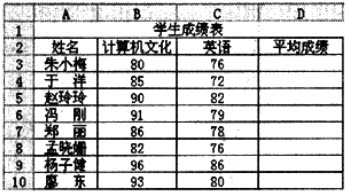
下载APP

【单选题】


(72)处应填()。
A.technical
B.classical
C.social
D.societal
A.
People are indulging in an illusion whenever they find themselves explaining at a cocktail (鸡尾酒) party, say, that they are "in computers," or "in telecommunications," or "in electronic funds transfer". The implication is that they are part of the high-tech world. Just between US, they usually aren’t. The researchers who made fundamental breakthroughs in those areas are in a high-tech business. The rest of us are (71) of their work. We use computers and other new technology components to develop our products or to organize our affairs. Because we go about this work in teams and projects and other tightly knit working groups(紧密联系在一起的工作小组), we are mostly in the human communication business. Our successes stem from good human interactions by all participants in the effort, and our failures stem from poor human interactions.
B.
The main reason we tend to focus on the (72) rather than the human side of the work is not because it’s more (73) , but because it’s easier to do. Getting the new disk drive installed is positively trivial compared to figuring out why Horace is in a blue funk (恐惧) or why Susan is dissatisfied with the company after only a few months. Human interactions are complicated and never very crisp (干脆的, 干净利落的) and clean in their effects, but they matter more than any other aspect of the work.
C.
If you find yourself concentrating on the (74) rather than the (75) , you’re like the vaudeville character (杂耍人物) who loses his keys on a dark street and looks for them on the adjacent street because, as he explains, "The light is better there!".
举报
参考答案:


参考解析:




刷刷题刷刷变学霸
举一反三

【单选题】(73)处填()。 A.investors B.developers C.designers D.stakeholders
A.
For nearly ten years, the Unified Modeling Language (UML) has been the industry standard for visualizing, specifying, constructing, and documenting the (71) of a software-intensive system. As the (72) standard modeling language, the UML facilitates communication and reduces confusion among project (73) . The recent standardization of UML 2.0 has further extended the language's scope and viability. Its inherent expressiveness allows users to (74) everything from enterprise information systems and distributed Web-based applications to real-time embedded systems.
B.
The UML is not limited to modeling software. In fact, it is expressive enough to model (75) systems, such as workflow in the legal system, the structure and behavior of a patient healthcare system, software engineering in aircraft combat systems, and the design of hardware.
C.
To understand the UML, you need to form a conceptual model of the language, and this requires learning three major elements: the UML's basic building blocks, the rules that dictate how those building blocks may be put together, and some common mechanisms that apply throughout the UML.
【单选题】2() A.autoexec.bat文件 B.boot.ini文件 C.config.sys文件 D.注册表
A.
种植、自启动、隐藏是木马程序的三大关键技术。由于杀病毒软件的存在,隐秘种植木马并不容易,其中一种较好的方法是 (1) 。在Windows系统中,为实现木马的自动启动,通常的方法是将其放于 (2) 中。为避免用户发现木马的存在,较好的隐藏方法 (3) 。
【单选题】(52)处填()。 A.1NF B.2NF C.3NF D.BCNF
A.
假设员工关系EMP(员工号,姓名,部门,部门电话,部门负责人,家庭住址,家庭成员,成员关系)如下表所示。如果一个部门可以有多名员工,一个员工可以有多个家庭成员,那么关系EMP属于 (52) ,且 (53) 问题;为了解决这一问题,应该将员工关系EMP分解为 (54) 。
B.


【单选题】2() A.1.4 B.6.7 C.9.3 D.18.7
A.
对无线局域网,可显著提高数据率的技术是 (1) 。对有2台计算机、1个AP、采用300Mbps的802.11n的WLAN,2台计算机数据传输的概率相同,则每台计算机实际传送用户数据的最大理论速度最接近 (2) MB/s。
【单选题】设L为广义表,将head(L)定义为取非空广义表的第一个元素,tail(L)定义为取非空广义表除第一个元素外剩余元素构成的广义表。若广义表L=((x,Y,z),a,(u,t,w)),则从L中取出原子项y的运算是()。
A.
head(tail(tail(L)))
B.
tail(head(head(L)))
C.
head(tai1(head(L)))
D.
tail(tail(head(L)))
【单选题】若要计算表中每个学生计算机文化和英语课的平均成绩,那么,可通过在D3单元格中填写() A.=AVG(B3+C3) B.=AVERAGE(B3+C3) C.=AVG(B3/C3) D.=AVERAGE(B3:C3)
A.
Excel学生成绩表如下表所示,若要计算表中每个学生计算机文化和英语课的平均成绩,那么,可通过在D3单元格中填写(),并()拖动填充柄至D10单元格,则可自动算出这些学生的平均成绩。

【单选题】it manages TCP streams and()to the IP layer. A.calls B.interfaces C.links D.produces
A.
Each machine supporting TCP has a TCP transport entity, either a library procedure, a user process, or part of the kernel. In all case, it manages TCP streams and()to the IP layer. A TCP()accepts user data streams from local process, breaks them into pieces not exceeding 64KB, and sends each piece as a separate IP(). When datagrams containing TCP data arrive at a machine, they are given to the TCP entity, which reconstructs the original byte streams.
B.
The IP layer gives no guarantee that datagrams will be delivered properly, so it is up to TCP to time out and()them as need be. Datagmms do arrive may well do so in the wrong order, it is also up to TCP to()them into messages in the proper sequence.

